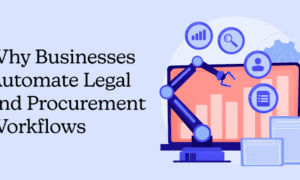Introduction
In today’s digital landscape, businesses are increasingly reliant on cloud computing to store and manage their data. However, this convenience comes with its own set of risks. As cyber threats continue to evolve, it’s crucial for organizations to prioritize cloud security. To help you fortify your cloud defenses, we’ve compiled a comprehensive guide with 10 essential tips.
Conduct Regular Security Audits
Regular security audits are essential for identifying vulnerabilities in your cloud infrastructure. By conducting thorough assessments, you can pinpoint potential weak spots and take proactive measures to address them. From evaluating access controls to analyzing encryption protocols, a comprehensive audit will ensure that your cloud environment remains secure.
Implement Multi-Factor Authentication (MFA)
Multi-factor authentication adds an extra layer of security by requiring users to provide multiple forms of verification before accessing sensitive data. By implementing MFA across your cloud applications and platforms, you can significantly reduce the risk of unauthorized access. Whether it’s through SMS codes, biometric scans, or hardware tokens, MFA enhances authentication protocols and strengthens your overall security posture.
Encrypt Data at Rest and in Transit
Encryption is a fundamental aspect of cloud security, protecting data both at rest and in transit. By encrypting sensitive information before it’s stored in the cloud and ensuring secure transmission between devices, you can safeguard against unauthorized interception and data breaches. Robust encryption algorithms and key management practices are essential components of a comprehensive encryption strategy.
Enforce Access Controls
Effective access controls are critical for limiting user privileges and preventing unauthorized access to sensitive resources. By implementing role-based access control (RBAC) and least privilege principles, you can ensure that users only have access to the data and functionalities necessary for their roles. Regularly review and update access permissions to align with organizational policies and regulatory requirements.
Keep Software and Systems Up to Date
Outdated software and systems are prime targets for cyber attacks, as they often contain known vulnerabilities that can be exploited by malicious actors. To mitigate this risk, it’s essential to keep your cloud infrastructure, applications, and operating systems up to date with the latest security patches and updates. Implementing automated patch management processes can streamline this task and minimize the window of exposure to potential threats.
Implement Intrusion Detection and Prevention Systems (IDPS)
Intrusion detection and prevention systems (IDPS) play a crucial role in identifying and mitigating security threats in real-time. By monitoring network traffic and analyzing patterns for suspicious behavior, IDPS can detect and block malicious activities before they escalate into full-fledged attacks. Deploying IDPS solutions across your cloud environment adds an additional layer of defense against evolving cyber threats.
Foster a Culture of Security Awareness
Security awareness training is essential for empowering employees to recognize and respond to potential security threats effectively. By educating staff about common phishing scams, social engineering tactics, and best practices for password management, you can minimize the risk of human error compromising your cloud security. Encourage a culture of vigilance and accountability, where everyone understands their role in maintaining a secure cloud environment.
Backup Data Regularly
Data loss can occur due to various factors, including hardware failures, cyber attacks, and natural disasters. Regularly backing up your data to secure offsite locations ensures that you can recover quickly in the event of an incident. Implementing automated backup solutions and conducting regular recovery tests will help you verify the integrity of your backups and ensure that critical data is always protected.
Monitor and Analyze Security Logs
Comprehensive logging and monitoring are essential for detecting security incidents and identifying potential threats in your cloud environment. By analyzing security logs and audit trails, you can gain valuable insights into user activities, system events, and potential security breaches. Implementing robust log management practices and leveraging advanced analytics tools will enable you to proactively identify and mitigate security risks.
Engage with Trusted Security Partners
Navigating the complex landscape of cloud security requires expertise and resources beyond what many organizations possess internally. Partnering with trusted security vendors and managed service providers can provide access to specialized knowledge, tools, and resources to enhance your cloud security posture. From threat intelligence and incident response to ongoing support and guidance, collaborating with security experts can help you stay ahead of emerging threats and ensure continuous protection for your cloud infrastructure.
Conclusion
In conclusion, safeguarding your cloud environment against evolving cyber threats requires a proactive and multi-faceted approach. By implementing the ten essential tips outlined in this guide, you can fortify your cloud security defenses and protect your organization’s most valuable assets. From conducting regular security audits to fostering a culture of security awareness, every step you take brings you closer to achieving robust and resilient cloud security posture.



































